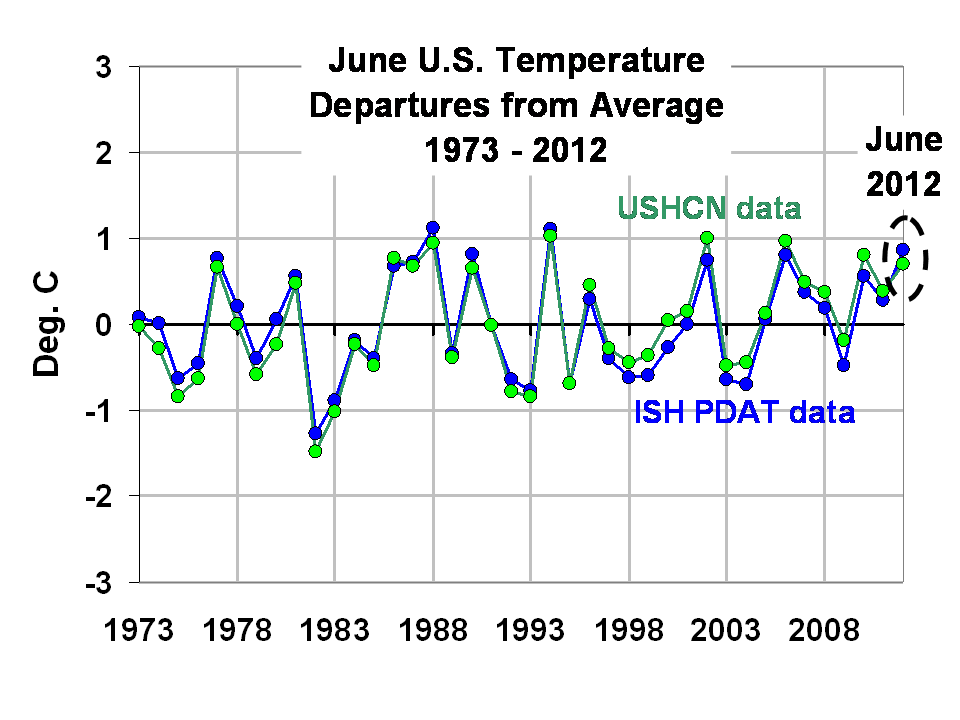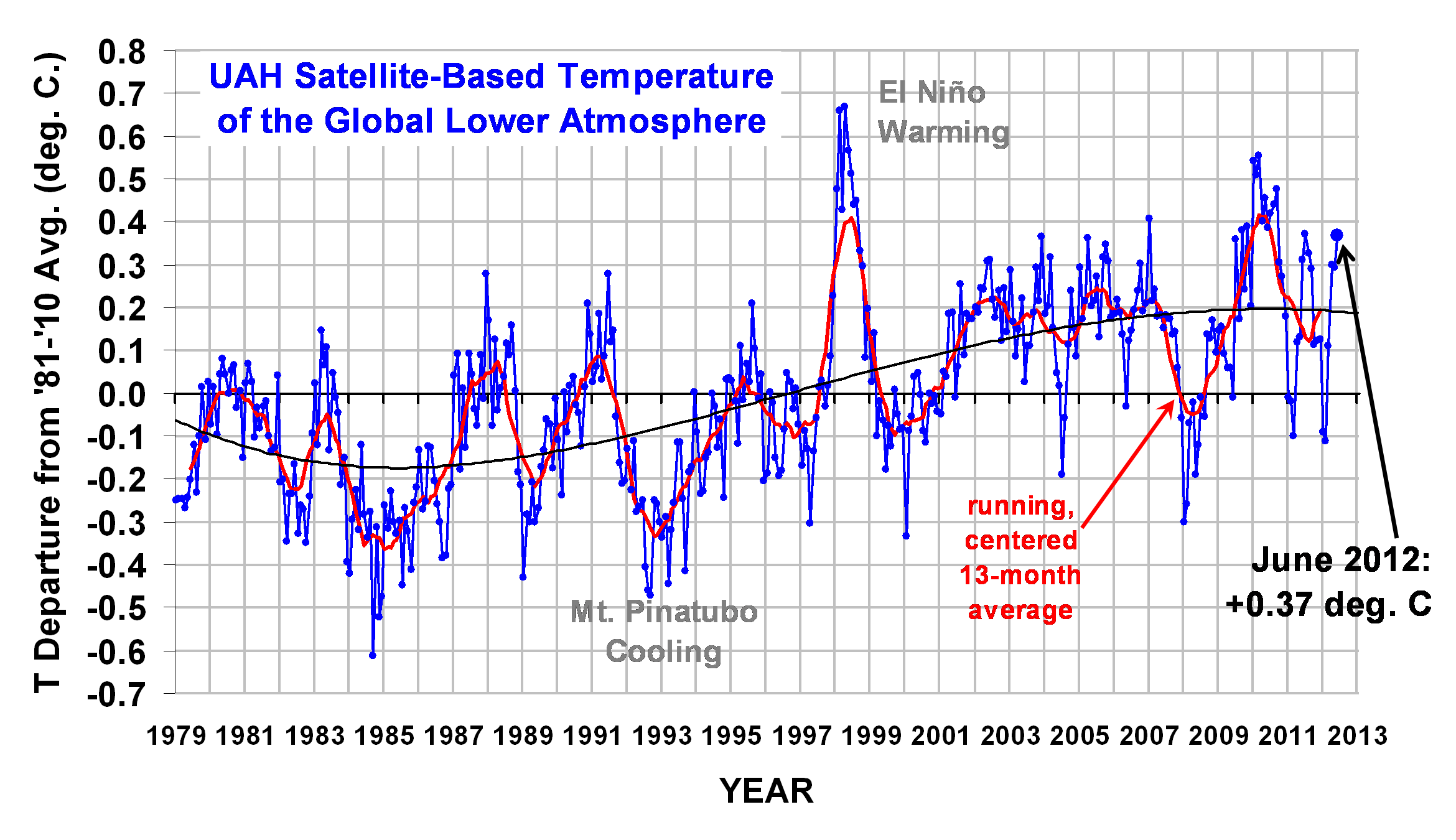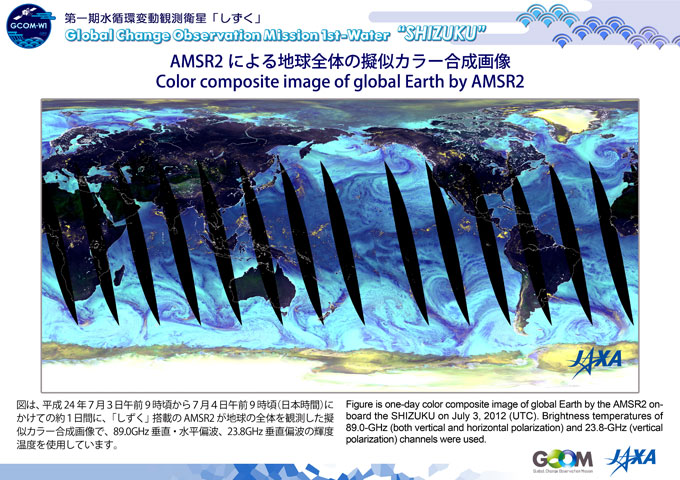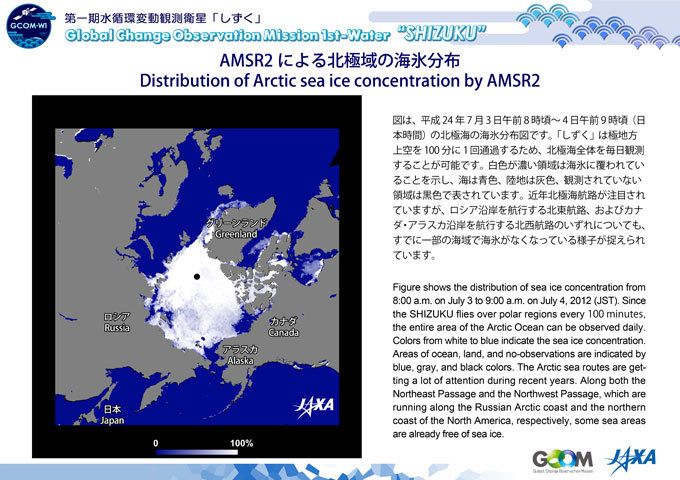This is meant to be just a heads up that we have submitted a paper to Journal of Geophysical Research (JGR) which I think is quite significant. We used a 1D forcing-feedback-diffusion model of ocean temperature change to 2,000 meters depth to explain ocean temperature variations measured since 1955.
We ask the question: What combination of (1) forcings, (2) feedback (climate sensitivity), and (3) ocean diffusion (vertical mixing) best explain the Levitus global-average ocean temperature trends since 1955? These are the three main processes which control global-average surface temperatures on longer time scales (a point which has also been made by NASA’s James Hansen).
The 1D model has the advantage that it conserves energy, which apparently is still a problem with the IPCC 3D models which exhibit spurious temperature trends (peer reviewed paper here). Our own analysis has shown that at least 3 of the IPCC models actually produce net (full-depth) ocean cooling despite positive radiative forcing over the 2nd half of the 20th Century.
After all, if a climate model can’t even satisfy the 1st Law of Thermodynamics, and global warming is fundamentally a conservation of energy process (net accumulation of energy leads to warming), how then can 3D models be used to explain or predict climate change? I don’t see how the IPCC scientific community continues to avoid mass cognitive dissonance.
The primary forcing used in our model is basically the same as that used in the new CMIP5 experiments, the largest components of which are anthropogenic greenhouse gases and aerosols, and volcanic aerosols. Using these traditional forcings alone in our 1D model gives a climate sensitivity in the range of what the IPCC models produce.
But an important additional component of our model is the observed history of the El Nino/Southern Oscillation (ENSO) as a pseudo-forcing, both through changes in ocean mixing across the thermocline (ENSO’s primary influence), and through potential changes in global albedo preceding ENSO temperature changes. These pseudo-forcings are included only to the extent they help to explain the Levitus ocean temperature data, as well as explain the satellite-observed relationship between radiative flux variations and sea surface temperature.
The results are, shall we say, not as supportive of the IPCC view of the climate system as the IPCC might like; more frequent El Ninos since the late 1970s do impact our interpretation of climate sensitivity and the causes of climate change. The paper also serves as a response to Andy Dessler’s published criticisms of our feedback work.
A shorter version of the paper was first submitted to Geophysical Research Letters (GRL) a few weeks ago, and was rejected outright by the editor as not being appropriate for GRL (!), a claim which seems quite strange indeed. I suspect the editor was trying to avoid the kind of controversy which led to the resignation of the editor of the journal Remote Sensing after publication of a previous paper of ours.
Now we shall see whether it is possible for JGR to provide an unbiased peer review. If our paper is rejected there as well, we might post the paper here so anyone can judge for themselves whether the study has merit.

 Home/Blog
Home/Blog








